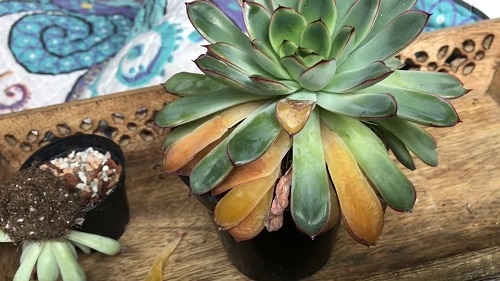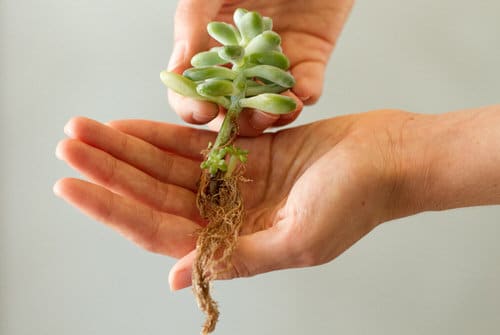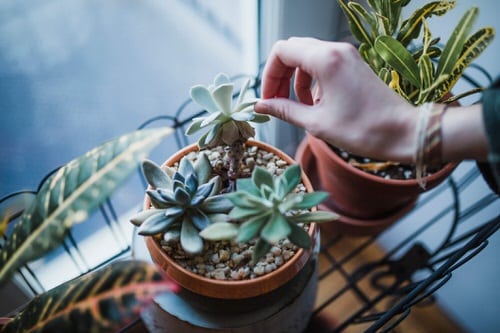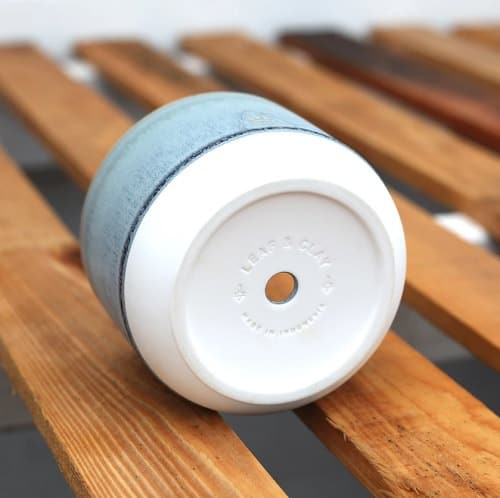The number one reason why succulents die is overwatering. If you’re facing that as well, it’s essential to learn How to Save an Overwatered Succulent.
The most common reason why succulents die is watering them excessively and frequently. If you have the same problem, it would be best to find out How to Identify and Save an Overwatered Succulent in this article.
Here are some great tips on watering succulents
Signs of an Overwatered Succulent

An overwatered succulent has mushy and squishy, soft-to-touch leaves. The foliage’s color fade becomes lighter or translucent compared to a healthy specimen, and the leaves also turn fragile and drop with a slight touch.
When you notice the above signs, chances are it is overwatered. A healthy succulent has a firm, hydrated, plump foliage and natural color.
Quick Fix to Save the Plant
If you notice any part or leaves of the plant in a rotten or mushy state, get rid of it immediately–doing this will save the plant at an early stage and will prevent it from getting damaged excessively. This can be due to frequent watering, waterlogging, misting, or lack of drainage holes in pots.
Stop watering such plants for a while, rewater again with fungicide diluted in the water only when the soil looks completely dry to touch and keep them in a dry place with filtered sunlight.
How to Save an Overwatered Succulent?
If a succulent shows early signs of overwatering like mushy, pale, and soft bottom foliage, the plant needs to be dried soon without delay. Follow the given instruction for combating this issue.
1. Allow the Roots to Dry

Remove the succulent from a pot and shake off extra soil jammed around the roots. Now, snip all black or brown rotten roots carefully and place the plant on a strainer or screen for two or three days until the roots dry.
When the roots seem totally dry, plant back in a pot having fresh succulent mix and treat it with copper fungicide.
A Tip: Once you repot the overwatered succulent, don’t hurry to water it again and keep the new growing medium dry. Wait for 2-3 more days and then water it.
2. Place Succulents Away from the Sun

Well, it may sound illogical to keep the overwatered succulent away from sunlight but it is going to work in the plant’s favor. As your rotting plant is already struggling and is under stress due to excess water, harsh direct sunlight, especially in the afternoon, can increase the problem.
Most succulent varieties need partial, filtered sunlight or dappled shade; hence avoid direct sunlight at this time. Also, avoid placing the plant in a damp area either. A dry place where it can get a lot of bright and dappled light will be the best.
3. Check the Drainage

This part is essential; otherwise, you will face the same issue again. Improve the drainage by taking a pot with proper drainage holes at the bottom.
It will allow the excess water to drain, preventing the roots from sitting in excess water.
4. Use Fresh Soil

You don’t need to change the soil completely (but it’s better if you do) if you have used a proper succulent mix. Just scoop out the affected soil and replace it with the fresh one.
If you have planted your succulent in the general potting soil, replace it with a well-drained one. Prepare it by taking three parts potting mix, two parts poultry grit or sand, and one part perlite or pumice.
We have some great succulent soil recipes here
5. Save What You Have

This is the last resort–get a clone of your overwatered succulent by propagating. Remove the surviving healthy leaves or stem cutting and allow the cut ends to heal for 3-5 days until they form a callus. Plant them following the instructions given in our step-by-step article here.



Thank you… It help me a lot to keep my succulents healthy and identify the usual problem of succulents. Do you have seeds of succulents for sale?
My succulent plants are not going to improving . What to do .